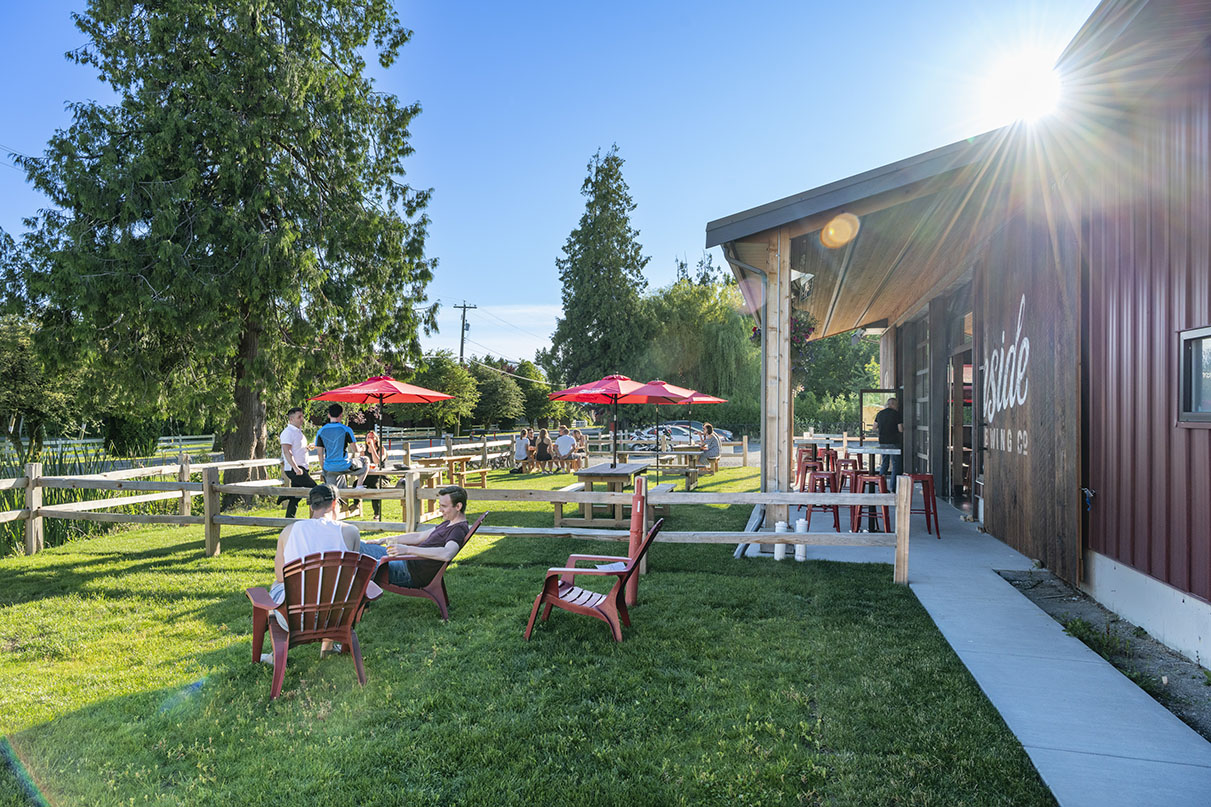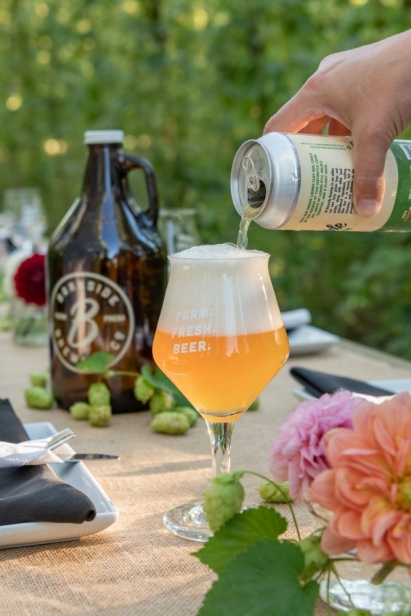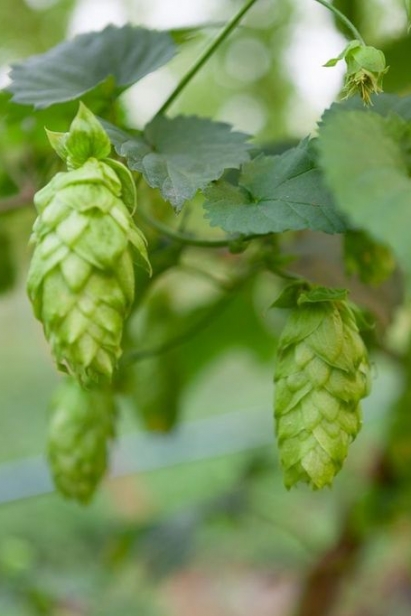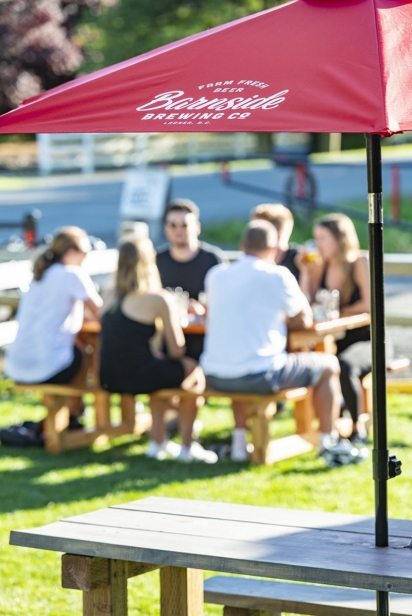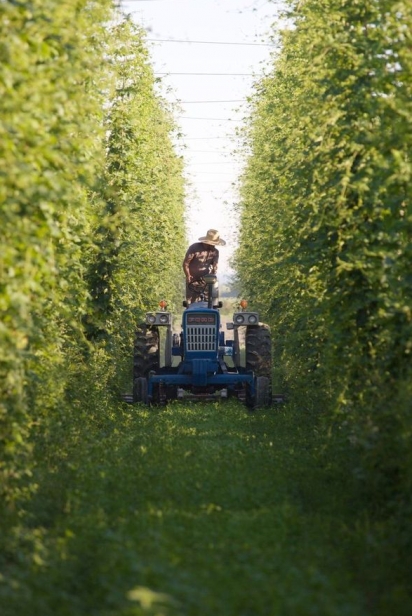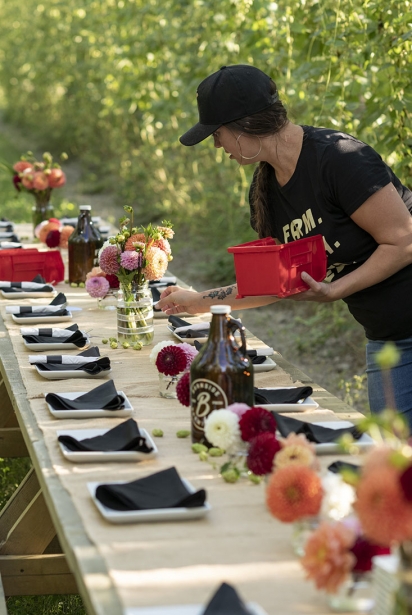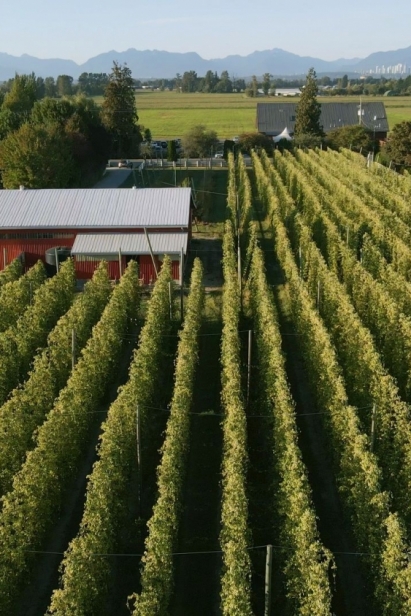We're Farmers Who Opened a Brewery
The setting for Barnside Brewing is positively pastoral. The brewery itself is in a barn-like structure that looks onto rows upon rows of hop vines that creep toward the sky. A Greater Swiss Mountain Dog puppy, who hasn’t quite grown into its paws, bounds across the yard in hopes of head scratches from a group of young women leaving the brewery. Down the road is a pasture where sheep graze, peacefully unaware that 10 minutes away is Canada’s third largest city.
In a region of craft breweries, Barnside sticks out for its farm-to-beer approach to brewing. The hops on display are not just for show; they are actually used in the beer. A good deal of the barley used in malts is grown by one of the four local families that own the brewery, and their perennial Hopyard Sour is made with wild yeast captured on the farm.
“The one thing I want people to take away is that the beer they’re drinking is an expression of this area, of our soil, of our climate,” says Ken Malenstyn. “It’s not a beer that anybody else can make.”
Malenstyn is one of the co-owners and a third-generation farmer who spent most of his adult life trying to avoid becoming a farmer.
Originally it was a dairy farm with 100 pasture-raised cows. His father sold the cows in the mid-’90s after the market changed and small farmers were forced to either go big or get out.
“You're kind of turning the corner into more of a corporate entity, and that’s just a different business,” Malenstyn says. “He was a farmer who was passionate about his animals and about farming, and it just wasn’t where he wanted to go.”
Malenstyn started down a similar path by doing an undergrad in dairy science in California. He was poised to do a master's at Cornell in reproductive physiology when he decided to take a different course in life.
“I remember flying into the Bay Area, just looking down and being like, what am I doing?” Malenstyn says. “I'm going to be in the middle of Iowa in the middle of winter with my arm up a cow’s ass, and I have no interest in it right now.”
He decided to study business and became a “marketing guy,” running a television production company for more than 20 years.
After his father retired six years ago, he took over the farm and decided to experiment with hops. At the time, there was a lot of buzz about a resurgence of the B.C. hop industry. At one point, B.C., particularly the Fraser Valley, was the largest hop grower in the British Empire. However, as macrobrewing took over, the hop industry moved down to Yakima, WA, and completely collapsed in the ’90s.
As microbreweries exploded onto the scene in the mid-2010s, so did the dialogue about a new hop market for B.C. growers. However, the industry has not seen the expansion growers and brewers needed.
The genesis of a brewery
Like many great ideas, Barnside Brewing started as a conversation between neighbours on a driveway. Malenstyn had hops. His neighbour, a grain farmer, was experimenting with malting hops, and his other neighbour was experimenting with home brewing. They connected the dots, and four years later, Barnside opened its doors.
“We would have opened two years sooner if it were just in an industrial park, but we wanted it to be on the farm,” Malenstyn says. “We wanted it to have a sense of place and connection to the farming history and heritage of Delta.”
Barnside opened its doors two months to the day before the pandemic shut the world down, causing the brewery to shift from taproom to takeout.
“We had such an interest locally in the community that they came out and totally supported us. It was great, and it kept the doors open,” Malenstyn says.
In some ways, the closures were a boon for Barnside as it was designed with copious outdoor seating in mind, something citylocked breweries and restaurants couldn’t offer.
“We had this big outdoor space, so the customer experience was pretty much the same,” says Malenstyn. “When all the restaurants finally opened back up, we did notice a drop.”
Walking through the hop vines, Malenstyn, who is also head of the B.C. Hop Growers Association, enthusiastically points out the different varieties — Chinook, Triple Pearl, Tahoma, Cascade, Sterling — as well as several varieties he’s growing in collaboration with Kwantlen Polytechnic University as part of its hops breeding program.
He makes his way to a vegetable patch, which he calls a market garden, that he leases out to a young couple (see sidebar on the following page) who grow for upscale restaurants in the city.
“I wanted to bring some more vibrancy to the farm,” Malenstyn says. “I didn't want it to be like, my dad retires, and the farm gets leased out, and it kind of goes stale. It just becomes an ex-farm.”
He stops at a large pasture where 30 or so sheep graze, unfazed by his presence. In the distance, cars bolt down Highway 99.
As on most farms, everything has a role to play, and the sheep are no exception. When the hops grow tall enough, Malenstyn releases them into the hop yard using portable fencing to clean the hop vines five rows at a time. They help reduce disease pressure by removing weeds and the canopy of the hop vine that doesn’t stop growing, reducing the chance for fungus, like downy mildew, to take hold.
“I could spray a desiccant, which would take about two hours, and I'd be done for the year,” Malenstyn says. “Instead, it's a month and a half of moving the sheep back, putting them out every morning and bringing them in every night. But it's just kind of a cool thing to do.”
For someone who avoided farming for most of his adult life, Malenstyn seems to have made peace with a pastoral existence.
“Maybe it's just me being older,” he says. “Honestly, I’m out here on the tractor, and it's quiet. I don't even have my phone on me, and I have time to think. You never get that time these days.”
Back at the brewery, Malenstyn points out the large wood beams that were salvaged from an old barn down the road (for those who know Highway 99, the beams are from the old White Spot barn) and an old map of Delta on the wall.
“Part of my whole branding exercise was building it around old farm advertisements,” Malenstyn says. “I love the colours from that era, but it was also a time when everybody still knew where their food came from and trusted agriculture.”
When many breweries constantly try to push the envelope with styles and tastes, Barnside is doing the classics, such as an open fermentation ESB (extra special bitter) and Honey Comb Pale Ale, with terroir in mind.
“We like to say we're farmers first,” Malenstyn says. “We're farmers who opened a brewery, not a brewery that opened a farmhouse.”
Barnside Brewing Co.
6655 60th Ave, Delta B.C.
barnsidebrewing.ca | 778.434.2264 | @barnsidebrewing


